Nestled in the heart of Luxor, the Karnak Temple Complex stands as a monumental testament to the grandeur and spiritual depth of ancient Egypt. Serving as a vital religious site for over 2,000 years, Karnak is one of the most impressive archaeological wonders in Egypt, drawing visitors from all over the world who are eager to explore its massive pylons, towering obelisks, and intricate hieroglyphs. Dedicated primarily to the god Amun-Ra, the complex reflects the grandeur of Egypt’s New Kingdom and the powerful religious and political role played by its pharaohs. A walk through Karnak feels like stepping back in time to an age of divine kingship and spiritual devotion. In this article, we will journey through the temple complex, highlighting its key features, the fascinating history behind its construction, and the lasting significance of this spiritual heart of ancient Egypt.
- Egypt Tour Magic
- Egypt Tour Packages
- Excursions in Egypt
- Cairo Tours and Excursions
- Hurghada Tours and Excursions
- Soma Bay Tours and Excursions
- Makadi Bay Tours and Excursions
- Sahl Hasheesh Tours and Excursions
- El Gouna Tours and Excursions
- Marsa Alam Tours and Excursions
- Port Ghalib Tours and Excursions
- El Quseir Tours and Excursions
- Dendera and Abydos Day Tours
- Aswan Tours and Excursions
- Luxor Tours and Excursions
- Alexandria Tours and Excursions
- Sharm El Sheikh Tours and Excursions
- Top Rated Tours in 2025
- Optional Excursions in Egypt
- Private Transfer
- Blogs About egypt
- Ancient Egypt
- What You Need To know Before Your First Trip To Egypt
- Best Places to Visit in Egypt 2025
- Top Attractions in Red Sea Resorts 2025
- Top 10 Tourist Activities in Egypt
- Top 30 Activities You Can’t Miss in Egypt
- The Guide to Guided Tours in Egypt
- Egypt’s Ancient and Modern History
- The Nile River
- The Deserts of Egypt
- Historical Sites in Egypt
- Cairo
- Alexandria
- Luxor
- Aswan
- The Red Sea
- Dendera Temple
- El Fayoum Oasis
- Bahariya Oasis
- Siwa Oasis
- Al Alamein
- Marsa Matruh
- Ancient Egyptian gods
- famous Egyptian dishes
- UNESCO World Heritage sites
- About Us
- Why Egypt Tour Magic
- Egypt Tour Magic
- Egypt Tour Packages
- Excursions in Egypt
- Cairo Tours and Excursions
- Hurghada Tours and Excursions
- Soma Bay Tours and Excursions
- Makadi Bay Tours and Excursions
- Sahl Hasheesh Tours and Excursions
- El Gouna Tours and Excursions
- Marsa Alam Tours and Excursions
- Port Ghalib Tours and Excursions
- El Quseir Tours and Excursions
- Dendera and Abydos Day Tours
- Aswan Tours and Excursions
- Luxor Tours and Excursions
- Alexandria Tours and Excursions
- Sharm El Sheikh Tours and Excursions
- Top Rated Tours in 2025
- Optional Excursions in Egypt
- Private Transfer
- Blogs About egypt
- Ancient Egypt
- What You Need To know Before Your First Trip To Egypt
- Best Places to Visit in Egypt 2025
- Top Attractions in Red Sea Resorts 2025
- Top 10 Tourist Activities in Egypt
- Top 30 Activities You Can’t Miss in Egypt
- The Guide to Guided Tours in Egypt
- Egypt’s Ancient and Modern History
- The Nile River
- The Deserts of Egypt
- Historical Sites in Egypt
- Cairo
- Alexandria
- Luxor
- Aswan
- The Red Sea
- Dendera Temple
- El Fayoum Oasis
- Bahariya Oasis
- Siwa Oasis
- Al Alamein
- Marsa Matruh
- Ancient Egyptian gods
- famous Egyptian dishes
- UNESCO World Heritage sites
- About Us
- Why Egypt Tour Magic
Unraveling the Wonders of Karnak: Egypt’s Spiritual Epicenter
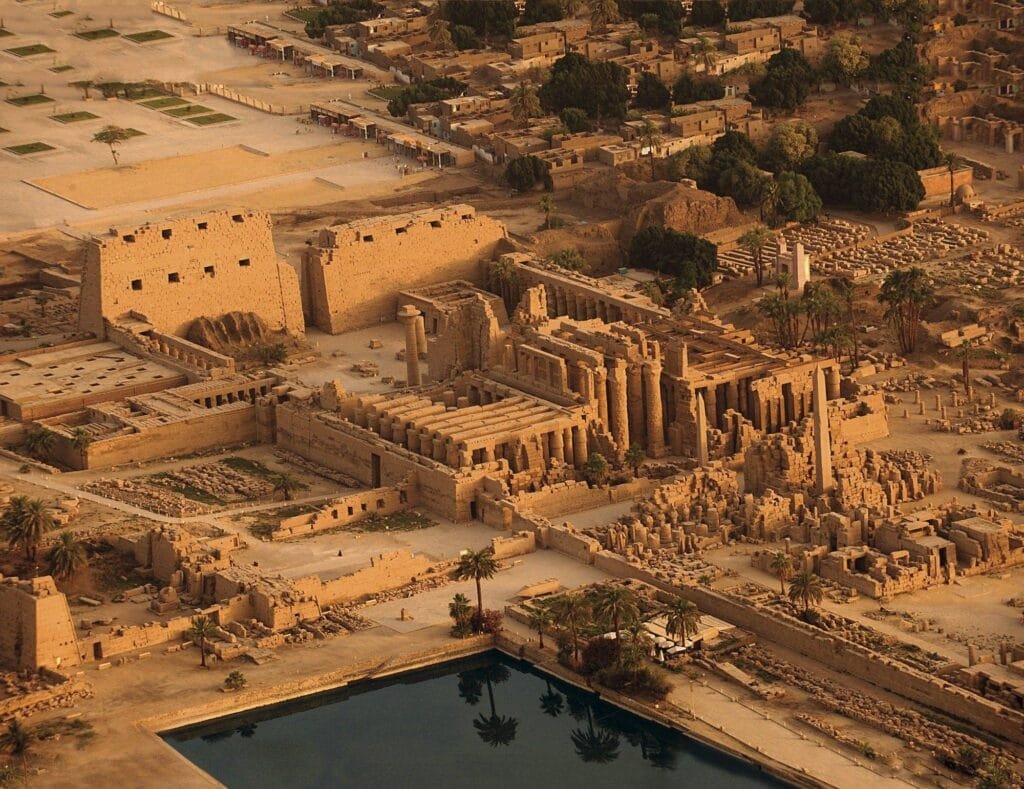
1. The Historical Significance of the Karnak Temple Complex
The Karnak Temple is not just a single temple but a sprawling religious complex that includes a variety of temples, chapels, pylons, and an awe-inspiring hypostyle hall. The complex was built and expanded upon over centuries by successive pharaohs, starting with the Middle Kingdom and continuing into the Ptolemaic period. It was dedicated to the Theban Triad of gods—Amun, Mut, and Khonsu—with the main focus on Amun-Ra, the king of the gods. Throughout its long history, the complex became a symbol of Egypt’s spiritual and political might. The sheer scale of the site reflects its importance; it was not only a place of worship but also a powerful political and cultural center. The temple was believed to be the earthly home of the gods, and its construction was seen as a way for the pharaohs to maintain divine favor and ensure Egypt’s prosperity.
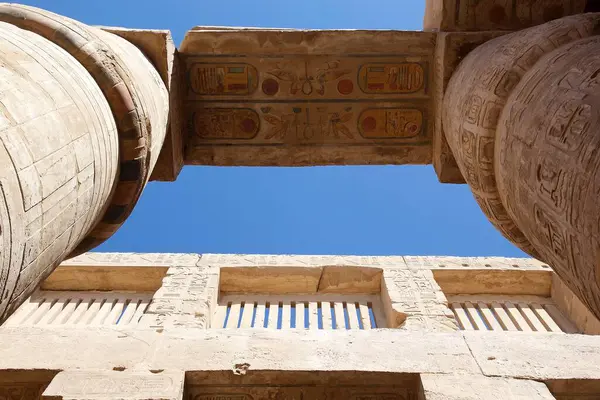
2. The Great Hypostyle Hall: A Marvel of Architecture
One of the most awe-inspiring features of the Karnak Temple is the Great Hypostyle Hall, a vast structure with 134 massive columns that dominate the space. These towering columns, some reaching a height of 69 feet (21 meters), are decorated with intricate hieroglyphic inscriptions and reliefs that depict the pharaohs and gods. The Hypostyle Hall was originally constructed by Seti I and completed by his son Ramses II, both of whom expanded the temple during their reigns. The hall’s design is meant to evoke the feeling of walking through the primordial waters of creation, with the towering columns representing the reeds that once grew in the sacred waters of Egypt’s creation myth. The effect of standing within this hall is overwhelming—its sheer size and the precision of the carvings bring the grandeur of ancient Egypt’s religious and architectural achievements to life.
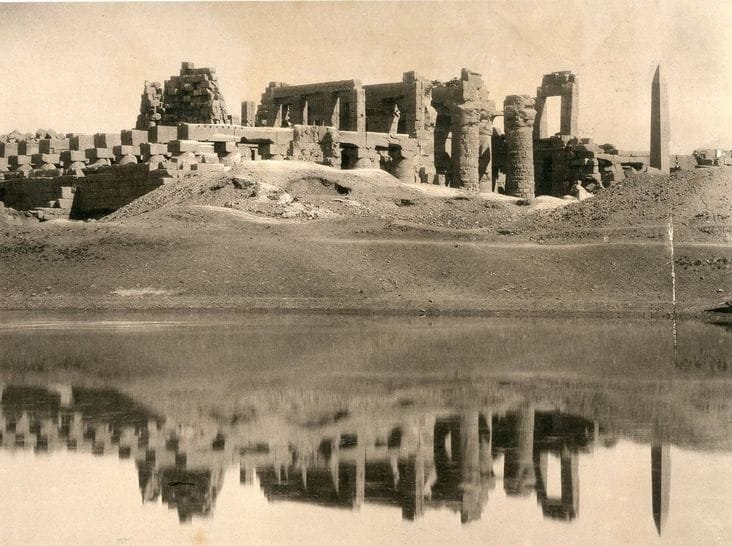
3. The Sacred Lake: A Symbol of Purity and Renewal
In the Karnak Temple Complex, visitors will find the Sacred Lake, a large, man-made lake that was used for ritual purification and religious ceremonies. The lake was considered a symbol of the primordial waters from which all life emerged and was believed to represent the Nun, the Egyptian god of the chaos waters. Pharaohs and priests would bathe in the lake as part of their rituals to purify themselves before entering the temple. The Sacred Lake was not only a physical site for cleansing but also served as a symbolic gateway to spiritual renewal. It was also used in processional rituals, where boats carrying sacred statues would be rowed across the lake as part of the religious festivals dedicated to Amun-Ra. The reflection of the temple and obelisks in the water adds a magical quality to the setting, making the Sacred Lake a serene and symbolic focal point within the complex.
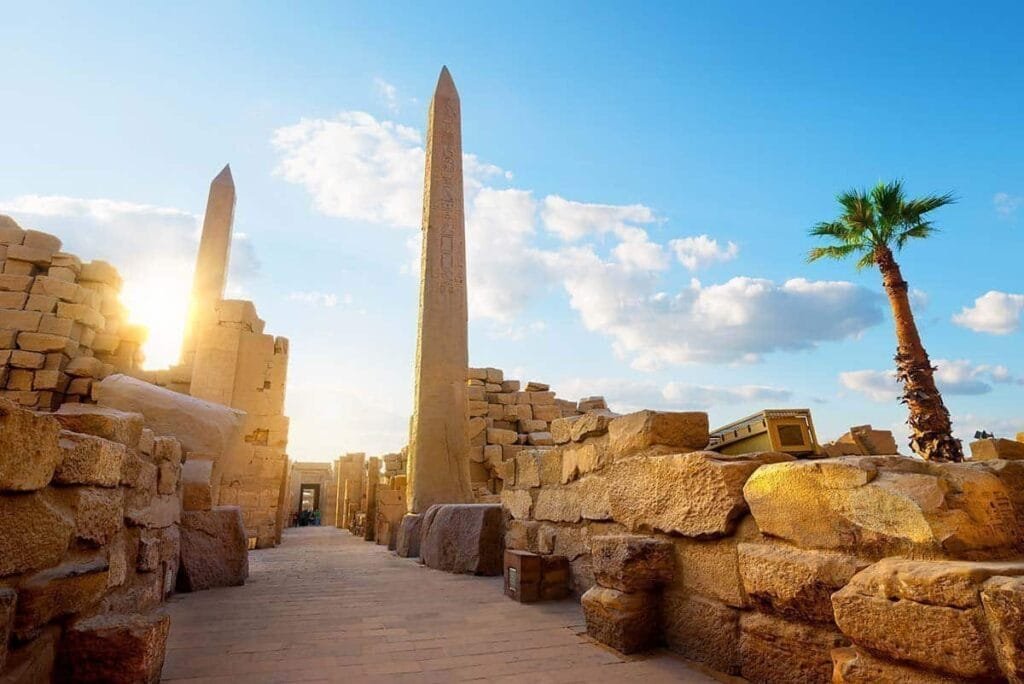
4. The Obelisks of Karnak: Symbols of Eternal Power
As one of the most recognizable features of the Karnak Temple, the obelisk has great historical and symbolic significance. Originally, Karnak was home to several towering obelisks, each of which was erected to commemorate the reign of a specific pharaoh. The most famous obelisk in the complex is the one erected by Hatshepsut, the powerful female pharaoh, which stands at 29 meters tall. Obelisks were carved from a single block of stone, usually granite, and were inscribed with hieroglyphs that recorded royal achievements. The pointed shape of the obelisk symbolized the sun’s rays and the pharaoh’s connection to the sun god Ra, representing divine power and eternal life. These monumental structures served both as architectural marvels and as potent symbols of Egypt’s connection to the divine, linking the king to the gods through the sheer scale and grandeur of their form.
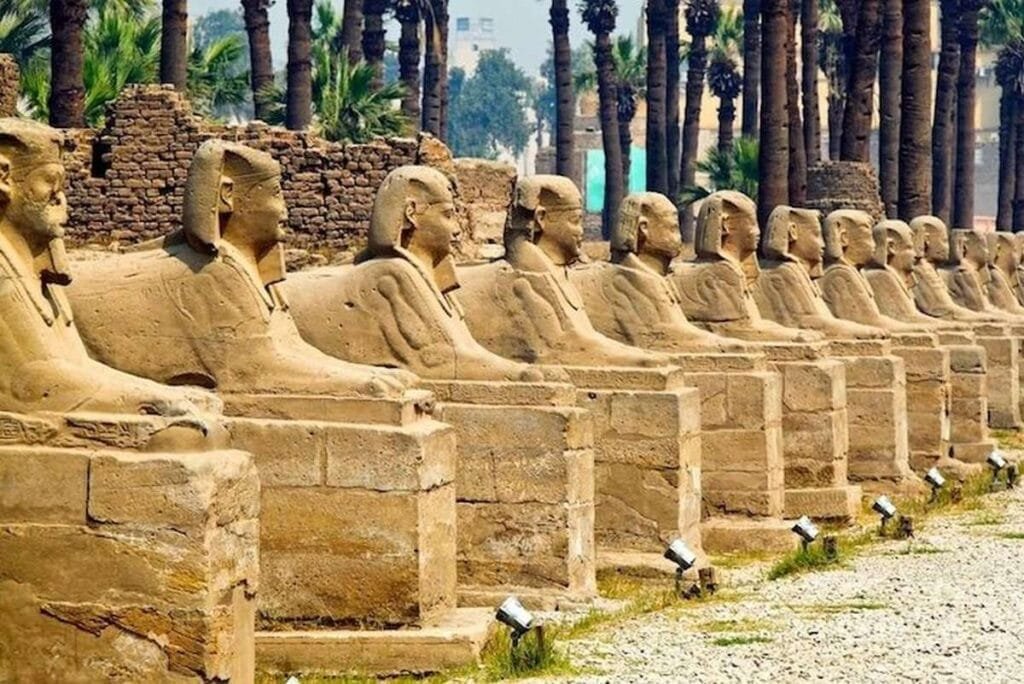
5. The Avenue of Sphinxes: A Majestic Entrance to the Temple
Leading to the Karnak Temple is the Avenue of Sphinxes, a long and majestic road that once connected the Karnak Temple to the Luxor Temple several kilometers to the south. This grand avenue is lined with over 1,000 sphinxes, many of which feature the body of a lion with the head of a ram, representing the god Amun. The purpose of the Avenue of Sphinxes was to provide a grand procession route for the annual religious festivals, particularly the Opet Festival, where statues of the gods were carried from Karnak to Luxor in elaborate processions. The sphinxes themselves were a symbol of strength and protection, standing guard to ensure the safety of the temple. The avenue was largely buried under sand for centuries until recent excavations began to reveal its full length and grandeur, further cementing the Karnak Temple’s role as the spiritual heart of ancient Egypt.
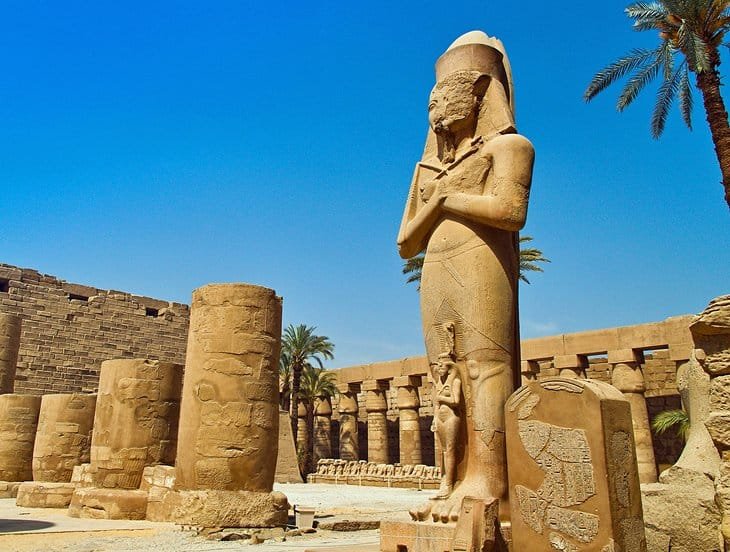
6. The Temple of Amun-Ra: The Core of Karnak
The Temple of Amun-Ra is the central and most sacred area within the Karnak Temple Complex. Dedicated to Amun-Ra, the king of the gods, this temple was the focal point of religious activity at Karnak. It is here that the most important ceremonies took place, including the daily rituals performed by the priests and the annual festivals celebrating Amun. The temple’s vast halls, courtyards, and sanctuaries were adorned with statues of gods, pharaohs, and various scenes from Egyptian mythology. The sanctuary housed a statue of Amun-Ra, which was believed to be the physical manifestation of the god on Earth. The temple’s grand scale reflects the immense power and reverence the Egyptians had for Amun, whose influence spread far beyond Thebes, especially during the height of Egypt’s New Kingdom. Today, the Temple of Amun-Ra remains the heart of the Karnak complex, representing both the spiritual and political power of ancient Egypt.
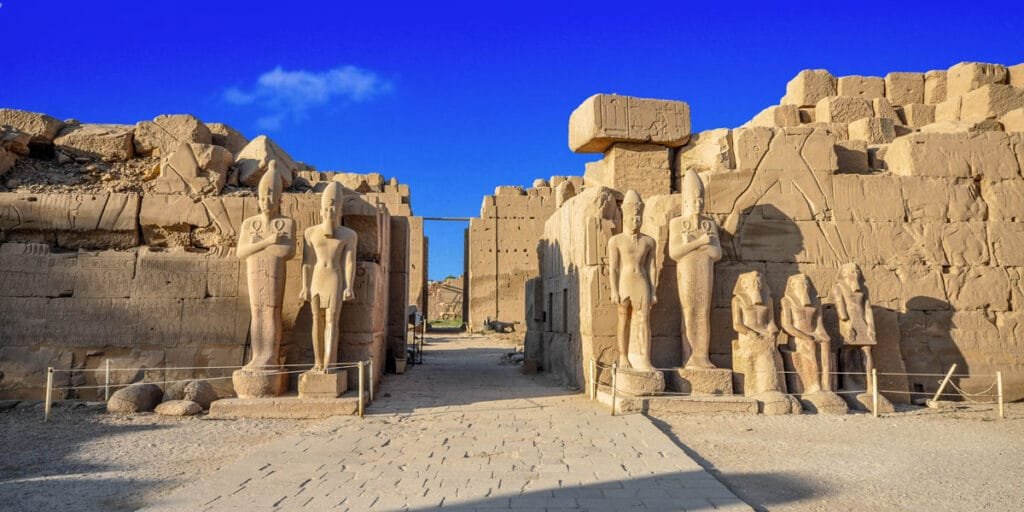
7. The Temples of Karnak and Modern-Day Discoveries
In recent years, the Karnak Temple Complex has continued to reveal new discoveries through ongoing archaeological work. Excavations have uncovered previously hidden chambers, walls adorned with additional hieroglyphic inscriptions, and remnants of earlier structures built by previous pharaohs. One of the most notable discoveries in recent years was the uncovering of a vast 2,000-year-old avenue of statues connecting Karnak with the Luxor Temple. These findings continue to shed light on the rich history of the site and the advanced engineering and artistic practices of ancient Egyptians. The ongoing research at Karnak also contributes to a deeper understanding of Egypt’s religious practices, the role of the pharaohs, and the architectural innovations of the ancient Egyptians. As more is discovered, Karnak's role as a key to unlocking Egypt’s spiritual and historical past continues to grow, ensuring its importance for future generations of historians and visitors alike.
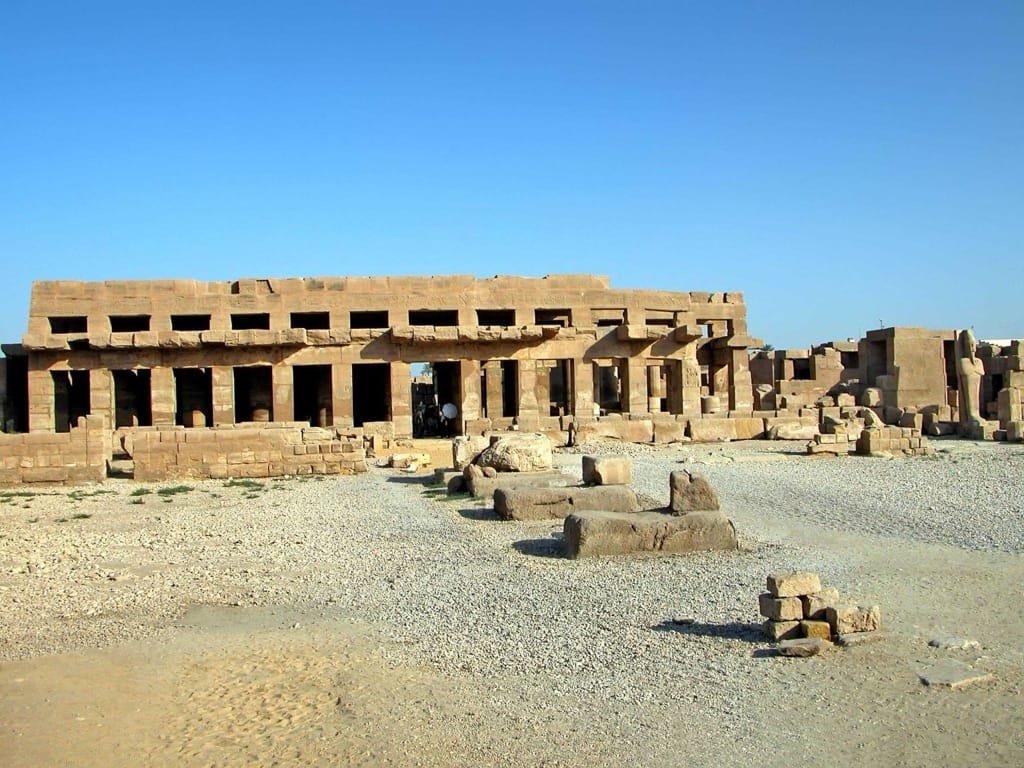
8. The Festival Hall of Thutmose III: A Unique Monument to Divine Kingship
One of the most impressive features within the Karnak Temple Complex is the Festival Hall of Thutmose III, also known as the Opet Festival Hall. This monumental structure was built by Thutmose III, one of Egypt's greatest pharaohs, to celebrate the Opet Festival, a key religious event that took place annually in honor of the gods, especially Amun-Ra. The hall is famous for its stunning reliefs and carvings, which depict the pharaoh in various ceremonial scenes, showing his role in connecting the divine and earthly realms. The festival itself was an important event, involving a grand procession from Karnak to the Luxor Temple, where statues of the gods were paraded, symbolizing the unity between the pharaoh, the gods, and the people. The Festival Hall of Thutmose III is not only an architectural wonder but also an important cultural artifact, demonstrating the centrality of religion in the daily life of the Egyptians and their understanding of kingship as a divine mandate.
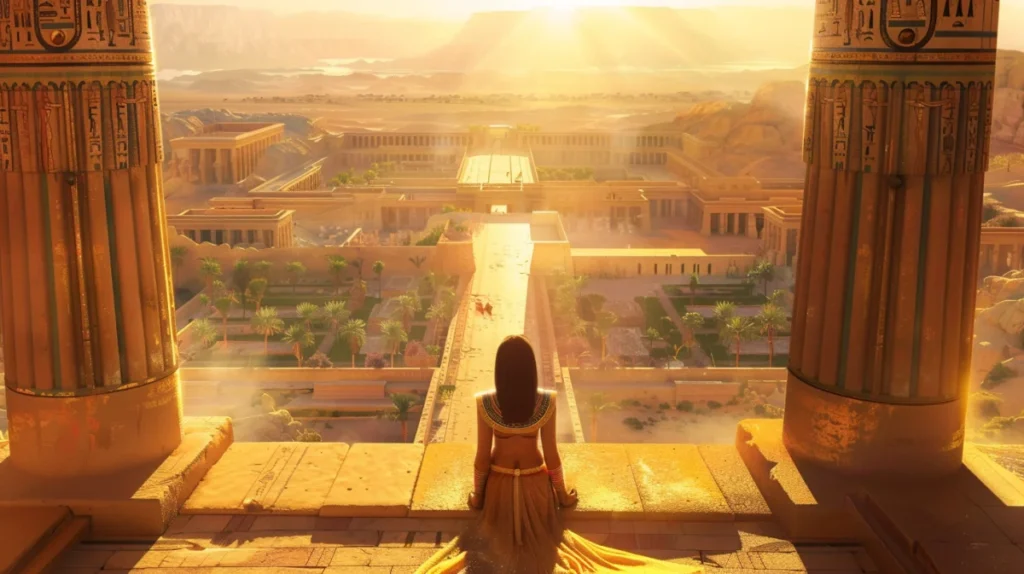
9. The Red Chapel of Hatshepsut: A Testament to Female Pharaoh's Power
The Red Chapel of Hatshepsut is another fascinating part of the Karnak Temple Complex, serving as a monument to one of Egypt’s most famous female rulers. Built by Queen Hatshepsut, the Red Chapel was intended as a structure for offering rituals to the gods, particularly Amun-Ra. What makes the chapel particularly unique is the way it embodies the blend of female kingship with divine authority. Hatshepsut, who ruled as a pharaoh in her own right, often depicted herself in male form in her statues and reliefs, which was a common practice for female rulers in ancient Egypt. The Red Chapel is intricately decorated with scenes of Hatshepsut making offerings to the gods and celebrating her divine rule. Although the chapel was originally dismantled, much of it has been reconstructed, and its inscriptions provide valuable insights into Hatshepsut's reign and her efforts to legitimize her rule as pharaoh. It stands as a powerful symbol of female leadership in ancient Egypt.


